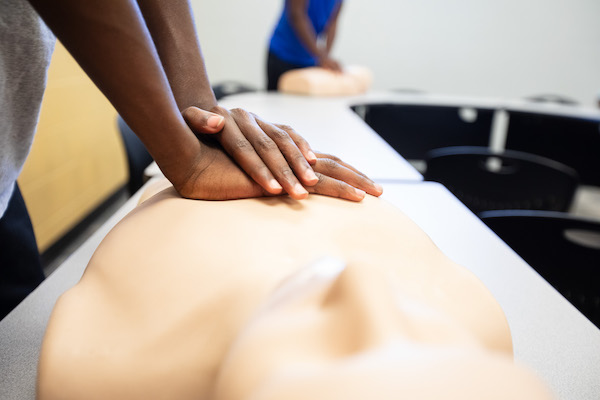What is the Appropriate Duration of CPR?
By Space Coast Daily // July 1, 2024

Cardiopulmonary resuscitation is a crucial life-saving technique that aims to restore the blood circulation and breathing of an individual whose breathing stops.
The duration of CPR is essential, and the chance of successful resuscitation diminishes with time. It is a crucial skill for anyone who may be called upon to offer emergency medical care.
A lot of people are debating the duration of CPR and whether the longer duration of CPR can increase the survival rate of hospitalized cardiac patients. This is a crucial factor contributing to improved outcomes in out-of-hospital cardiac arrests.
Most people think:
- How long is CPR performed?
- How long should you do it?
- Does the amount of CPR matter?
More than 300,000 cardiac arrests occur annually in the United States, and the success rate is lower than 20% for in-hospital cardiac arrests. Prompt bystander CPR increases the chances of survival. Out-of-hospital cardiac arrests are associated with pulseless ventricular tachycardia, or initial ventricular. This boosts improved survival rates. Online CPR certification teaches the ideal duration for effective resuscitation. Keep reading to explore more.
What is the ideal duration of CPR?
Emergency medical services professionals must give five cycles of CPR prior to attempting defibrillation to treat out-of-hospital cases of cardiac arrest. There are no guidelines highlighting the tenure of CPR; hence, it is essential to know the duration well. It was originally believed that CPR resulted in permanent brain damage. Even if the cardiac arrest patient survived, they faced issues that were life-altering.
However, according to a new study, those who received continued CPR received adequate circulation. This study suggests that CPR can keep blood circulating for up to 30 minutes without causing brain damage. Survival decreases by 7–10% for every minute without CPR.
Why is time crucial for CPR?
Time is crucial, as for every minute that passes, the chances of surviving drop by 10%. Soon after four minutes, it causes brain damage. After ten minutes, you cannot save the patient. You will get the best favorable outcome when you perform CPR immediately, and the average CPR time is 21–25 minutes. After this, the effectiveness of CPR may decline. If it does, then you must consider alternate methods, including ECPR.
What is the ideal duration of CPR for infants?
The recommended duration for performing CPR on an infant is 2 minutes, or 5 cycles of 30 compressions to 2 breaths. However, if you see breathing or movement, then the rescuer must stop CPR and seek medical assistance as soon as possible. It is crucial to note that CPR for infants is different as compared to adults or children. Hence, the rescuers performing CPR must have proper training and be well equipped.
Do you need to adjust the CPR duration?
Yes, you need to adjust the duration of CPR based on the underlying medical condition or history of the victim. For example, if the victim has pre-existing medical conditions affecting the heart or breathing, they need more CPR duration as compared to a person experiencing no such condition. In addition to this, the age of the victim, the overall health status, and the cause of the cardiac arrest may have an impact on the duration.
It is also vital to note that only a trained medical professional can determine the duration. The duration may vary and depend on several individual circumstances. Continue CPR until the victim shows signs of recovery, such as breathing on their own.
What is the limit of CPR for drowning victims?
There is no time limit to perform CPR on a drowning victim. You must initiate CPR immediately after a drowning event and continue it until advanced medical help arrives. Early CPR is beneficial and critical to boosting the chances of survival. Initiate it early, even in drowning victims.
What is the duration of CPR before brain damage?
The appropriate duration of CPR depends on the situation and the condition of the patient. Usually, you must perform CPR for at least two minutes before checking the patient’s response. If you do not get any response after two minutes, then continue CPR until medical help arrives or the patient becomes conscious. In certain cases, such as with a terminally ill patient, it may not be crucial to continue CPR for more than a few minutes.
What are the benefits of longer-term CPR?
Here are the benefits of longer-term CPR:
- Studies have shown that the longer you perform CPR, the higher your chances of survival. It helps achieve spontaneous circulation.
- Moreover, longer-term CPR can help reduce brain damage. It helps improve neurological outcomes.
- It can give medical professionals more time to evaluate the condition of the patient and assess alternate treatments.
- Longer CPR reduces the risk of post-resuscitation complications.
Conclusion
Observation studies and clinical trials are still required to assess the duration of CPR. However, the data and information provided above help individuals learn how long to give CPR. Thus, enroll in an Online CPR certification course and learn the duration of CPR to know the impact it leaves on survival.












